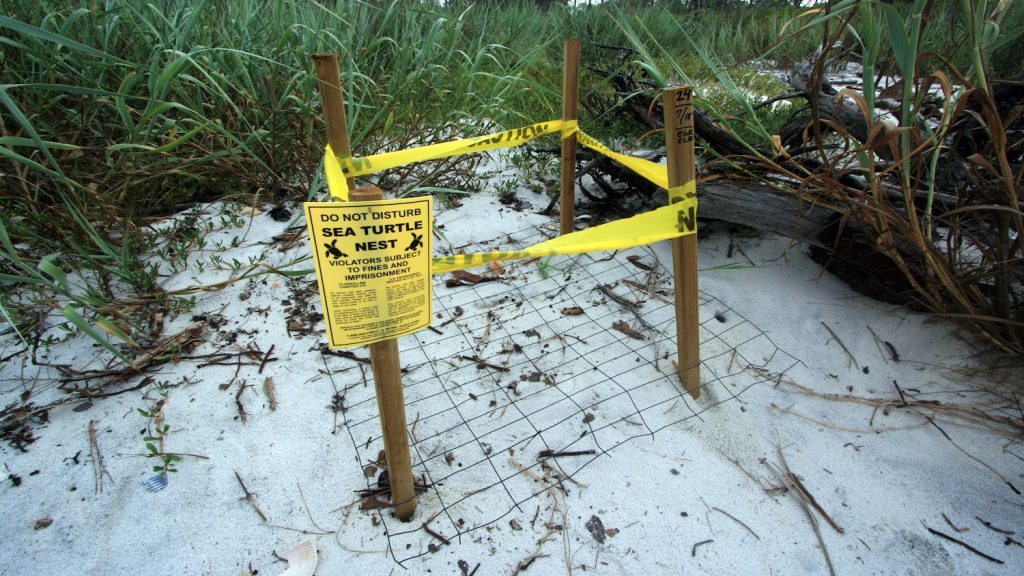The Vulnerability of Sea Turtle Nesting Beaches to Climate Change in the Southeast

Principal Investigator: Kristen M. Hart, Ph.D., Research Ecologist, USGS Southeast Ecological Science Center
Project Completion: April 2014. This project is now completed.
Implements Science Plan Theme: 4 and 5
The loggerhead sea turtle, found in the Atlantic, Pacific, and Indian Oceans, is divided into nine distinct populations—five of which are federally endangered and four of which are federally threatened. Unfortunately, climate change may be putting the species at further risk. Sea-level rise, increased storm frequency, and changes in temperature and humidity could reduce the suitability of habitat used by loggerheads and other endangered sea turtles for nesting and feeding.
This project assessed the vulnerability of key sea turtle nesting beaches to climate change in the Southeast. Researchers examined previous records of sea turtle nesting locations in the Southeast to identify the characteristics of these beaches, then predicted the future suitability of these beaches for nesting based on projected climate change. Beaches on both the Atlantic and Gulf coasts are expected to be very susceptible to change associated with sea-level rise, making it imperative that we understand how these changes will affect the suitability of nesting sites.
The results of this work can be used to directly inform federal recovery efforts for the loggerhead sea turtle. Identifying locations where beach habitat will no longer be suitable for nesting will help managers determine what action needs to be taken to protect loggerheads, such as moving nests out of highly vulnerable areas. Further, some of the nesting beaches used by loggerheads are also used by other endangered sea turtles, such as the Kemp’s ridley, green, and leatherback sea turtles. Therefore, this project represents a vulnerability assessment of coastal nesting habitat for multiple species of national conservation concern.
